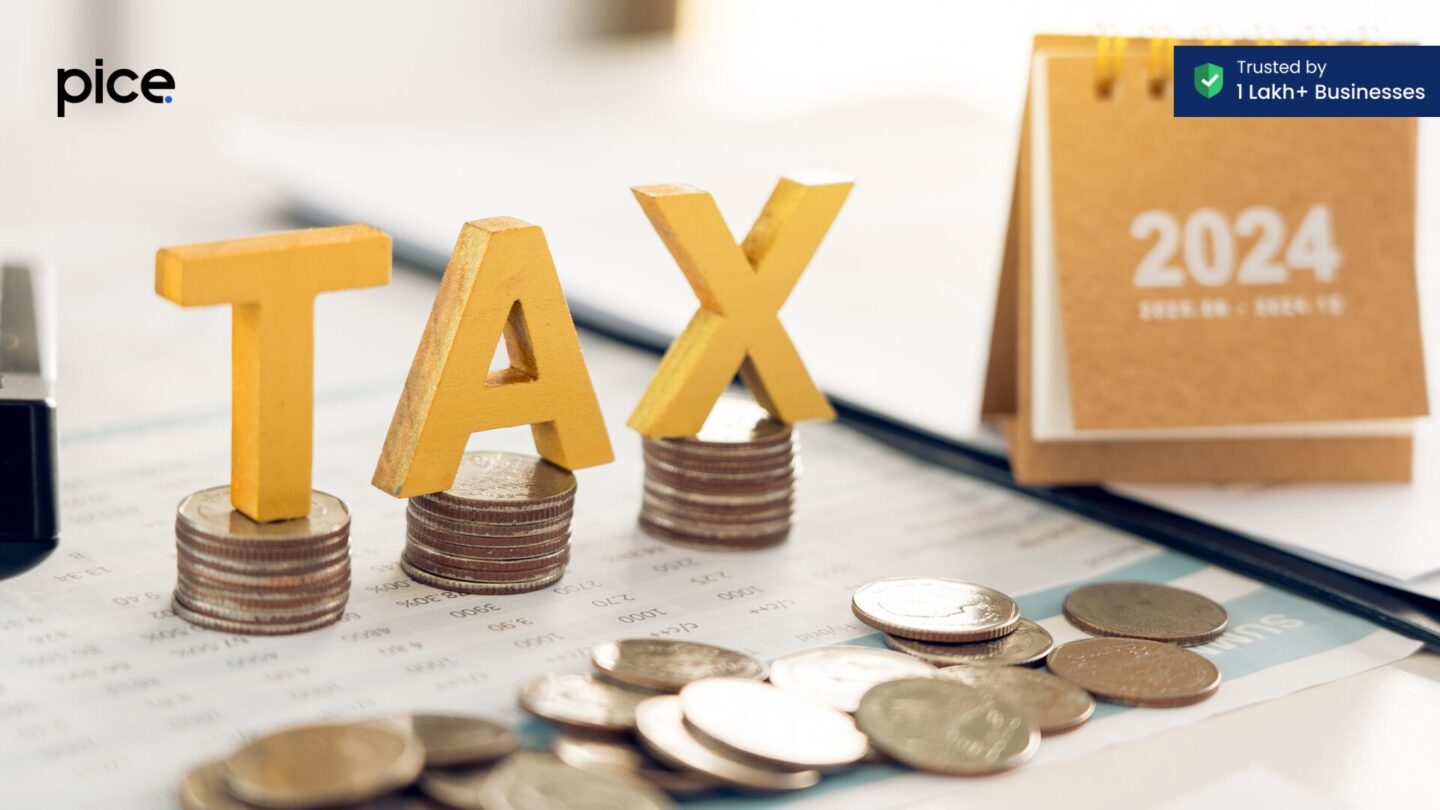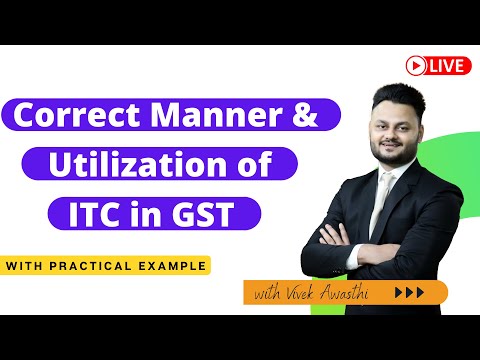Key Takeaways
- Optimize ITC Claims: Regular reconciliation between GSTR-2B/2A, GSTR-3B, and books of accounts ensures accurate tax payments, ITC claims and minimizes GST liability.
- Composition Scheme Simplifies Compliance: The Composition Scheme offers small taxpayers an easier way to comply with GST by paying a fixed percentage of turnover as tax.
- Utilize ERP Solutions: Implementing an ERP E-TDS Return Filing Solution streamlines GST return filing, improves business compliance, and manages ITC efficiently.
- Maintain Accurate Records: Keeping detailed records of invoices, debit notes, and reconciliation statements is crucial for compliance and audit readiness.
- Regular Vendor Communication: Ensure vendors report transactions correctly and timely to prevent discrepancies in ITC claims and ensure smooth GST operations.
Input Tax Credit (ITC) is a key feature of the GST system, allowing businesses to reduce their tax liability. It enables businesses to claim credit for the GST paid on purchases of goods and services used in their operations, ensuring tax is paid only on value addition and preventing tax cascading.
Components of ITC under GST
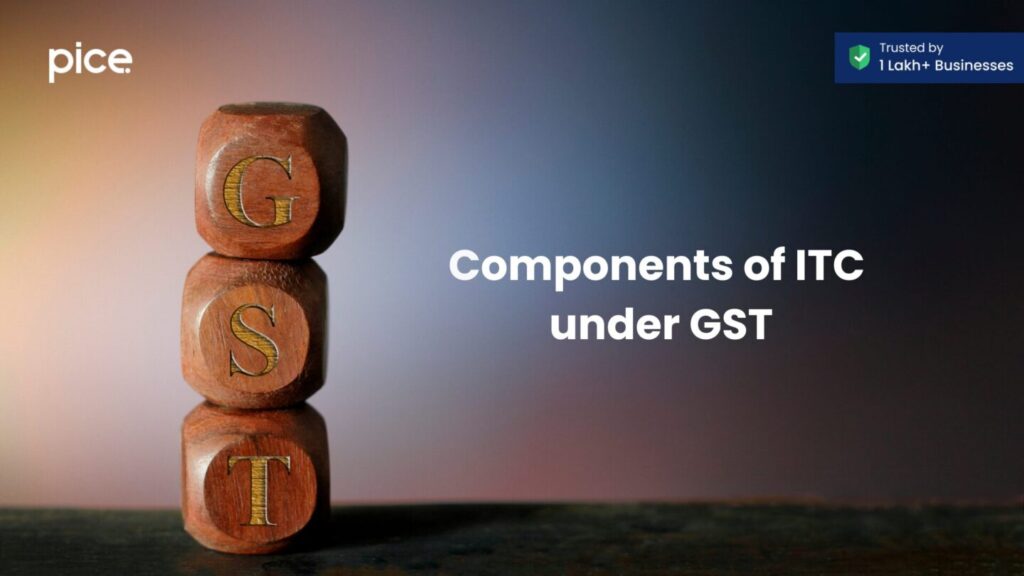
- Outward Supplies:
- Sales of goods or services by the business.
- ITC offsets the output tax liability on these sales.
- Input Supplies:
- Purchases of goods and services for business use.
- ITC is claimed for GST paid on these purchases.
- Capital Goods:
- Assets used in production.
- ITC is claimed on GST paid for these goods.
- Input Services:
- Services used in business operations.
- ITC is claimed for GST paid on these services.
Need for Reconciliation of Returns with the Books of Accounts
Reconciliation of GST returns with the books of accounts is crucial for the following reasons:
- Accuracy in Tax Reporting: Ensures the data in GST returns (GSTR-1, GSTR-2A/2B, GSTR-3B) matches the books of accounts for correct tax computation and ITC claims.
- Maximizing ITC Claims: Identifies unclaimed ITC and ensures all eligible ITC is claimed, maximizing benefits and compliance.
- Avoiding Penalties: Prevents discrepancies that can lead to notices and penalties from tax authorities by promptly identifying and correcting errors.
- Ensuring Vendor Compliance: Confirms vendors have correctly filed returns and paid taxes, safeguarding your ITC claims.
Eligible and Ineligible Input Tax Credit under GST
| Category | Description | Example |
| Eligible Input Tax Credit | ||
| Business Purposes | Goods and services directly related to business operations | Raw materials for manufacturing |
| Input Services | Services supporting business activities | Legal consultation services |
| Capital Goods | Assets used in production or business operations | Machinery for manufacturing |
| Reverse Charge Mechanism | GST paid on supplies where the recipient is liable for tax | Imported services |
| Miscellaneous | Other goods or services used in business, not specifically excluded | Office supplies |
| Ineligible Input Tax Credit | ||
| Personal Use Items | Goods and services for personal consumption | Personal travel expenses |
| Exempt Supplies | Goods and services for making exempt supplies | Healthcare services |
| Motor Vehicles | Except when used for specific purposes like transportation of goods | Company executive’s car |
| Membership Fees | Membership of clubs, health and fitness centers | Gym memberships |
| Insurance | Health and life insurance for employees, unless mandated by law | Voluntary health insurance plans |
| Personal Consumption | Goods and services for non-business purposes | Food and beverages for personal events |
| Construction Services | For immovable property, except for works contract service | Building a new office |
| Beauty and Fitness Services | Beauty treatment, health services, cosmetic surgery | |
Input Tax Credit (ITC) on Capital Goods
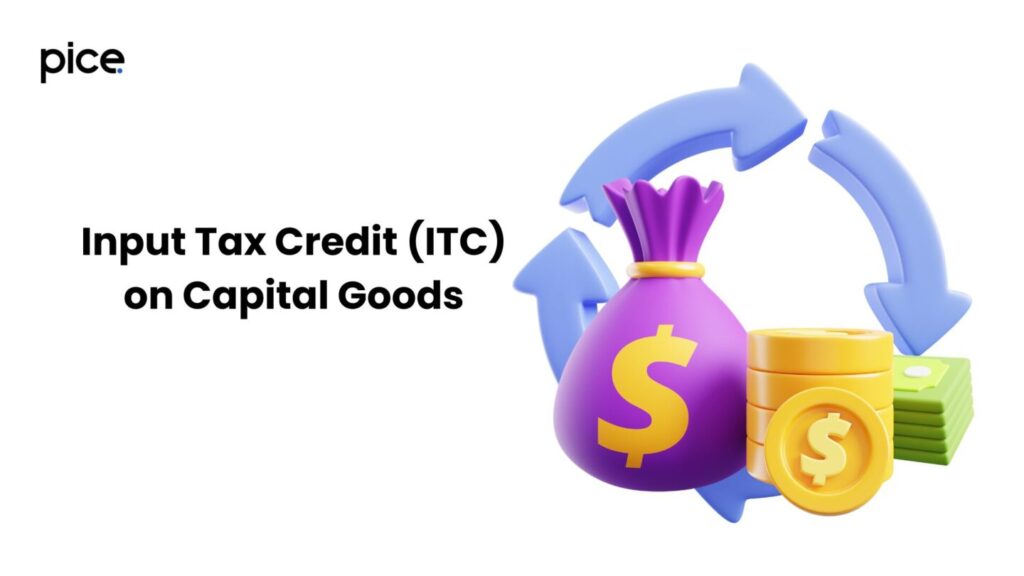
Who Can Claim Input Tax Credit under GST?
Any registered taxpayer under GST who purchases goods or services for business use can claim ITC. This includes manufacturers, suppliers, agents, e-commerce operators, and any other registered businesses.
Conditions to Claim an Input Tax Credit under GST
To claim ITC, the following conditions must be met:
- Possession of a valid tax invoice or debit note: The taxpayer must have a valid tax invoice or debit note issued by a registered supplier.
- Receipt of goods or services: The taxpayer must have received the goods or services.
- Tax payment to the government: The supplier must have paid the GST to the government.
- Filing of GST returns: The taxpayer must have filed the necessary GST returns, such as GSTR-1, GSTR-2A/2B, and GSTR-3B.
Time Limit to Claim Input Tax Credit under GST
The ITC must be claimed within:
- The due date of furnishing the return for September following the end of the financial year to which the invoice pertains, or
- The date of filing the annual return, whichever is earlier.
How to Claim Input Tax Credit under GST?
To claim ITC, businesses must:
- Verify purchase invoices: Ensure all purchase invoices are correct and GST has been charged.
- Match ITC with GSTR-2A/2B: Reconcile the ITC claimed with the details in GSTR-2A/2B.
- File GSTR-3B: Report the ITC claimed in the monthly GSTR-3B return.
- Maintain proper records: Keep detailed records of all invoices and relevant documents.
Annual Return and Compliance
Filing the annual return (form GSTR-9) is crucial for reconciling all ITC claims and GST liability. Maintain detailed records of all invoices, debit notes, and reconciliation statements for compliance and audit readiness. This process helps optimize ITC and ensures that the business adheres to the relevant GST regulations.
What should be done in case ‘excess/less’ credit in GSTR-2B/2A compared to GSTR-3B?
Handling Excess/Less Credit in GSTR-2B/2A Compared to GSTR-3B
When there is a discrepancy between the Input Tax Credit (ITC) reflected in Form GSTR-2B/2A and the ITC claimed in GSTR-3B, it is crucial to address it promptly to ensure accurate tax reporting and compliance.
Steps to Handle Excess Credit
Step 1: Identify the Source of Excess Credit:
- Compare the purchase invoices and tax period with entries in GSTR-2B/2A and GSTR-3B.
- Verify if the excess credit is due to duplicate credit entries or timing differences in vendor payment reporting.
Step 2: Adjust in Subsequent Returns:
- If excess credit is identified, adjust it in the subsequent month’s GSTR-3B return.
- Ensure that the excess credit is accurately reported and reconciled in the electronic credit ledger.
Step 3: Communicate with Vendors:
- Confirm with vendors if there have been any errors in their GST returns.
- Ensure that vendors correct any duplicate or incorrect entries.
Steps to Handle Less Credit
Step 1: Identify Missing Invoices:
- Cross-check the purchase invoices, taxable supplies, and vendor payment records with GSTR-2B/2A.
- Identify any invoices not reflected in GSTR-2B/2A that are accounted for in GSTR-3B.
Step 2: Reconcile and Rectify:
- If less credit is found, reconcile the differences and ensure that all eligible ITC is claimed in the tax period.
- Make necessary adjustments in the subsequent GSTR-3B return.
Step 3: Follow Up with Vendors:
- Contact vendors to ensure that they have correctly filed their returns and that the ITC is accurately reported.
- Obtain and retain valid tax invoices or debit notes from vendors.
Documentation and Compliance

- Maintain Records:
- Keep detailed records of all invoices, debit notes, and reconciliation statements.
- Ensure accurate and timely filing of monthly returns to reflect the adjustments.
- Annual Return Filing:
- At the end of the financial year, reconcile all ITC claimed and reported in the annual return (GSTR-9).
- Verify the GST liability and ensure all adjustments are correctly reflected.
- Use Credit and Debit Notes:
- Issue credit notes for any returns or adjustments in taxable supplies.
- Reflect these adjustments in the GST returns to maintain accurate output liability and ITC claims.
- Regular Monthly Reconciliation:
- Perform regular reconciliation of monthly returns (GSTR-1, GSTR-2A/2B, GSTR-3B) with the books of accounts.
- Ensure that all vendor payments, excess credits, and service tax records are accurately reflected.
Steps to Reconcile Credit Mismatch Between GSTR-2B/2A and GSTR-3B
| Step | Action | Description |
|---|---|---|
| Identify Discrepancies | Compare ITC claimed in GSTR-3B with GSTR-2A/2B and books of accounts | Identify differences in taxable supplies, vendor payments, and tax periods |
| Excess Credit in GSTR-2B/2A | Verify and Adjust | Verify if excess credit is due to duplicate entries or timing issues. Adjust in subsequent GSTR-3B return |
| Communicate with Vendors | Ensure vendors have correctly reported complex transactions and made necessary corrections | |
| Less Credit in GSTR-2B/2A | Identify Missing Invoices | Check for missing invoices or delayed reporting by vendors. Ensure all eligible ITC is claimed |
| Follow Up | Communicate with vendors to rectify discrepancies and obtain valid tax invoices | |
| Reconcile with Books of Accounts | Monthly Reconciliation | Regularly reconcile GSTR-3B, GSTR-2A/2B, and books of accounts. Address any mismatch promptly |
| Adjust Entries | Make necessary adjustment entries in the electronic credit ledger to reflect accurate ITC claims | |
| Annual Return and Compliance | File GSTR-9 | Reconcile all ITC claims and GST liability in the annual return (GSTR-9) |
| Maintain Records | Keep detailed records of all invoices, debit notes, and reconciliation statements for compliance and audit readiness. |
Reconciliation Amongst GSTR-3B and Accounts Book
Regularly reconcile GSTR-3B, GSTR-2A/2B, and the books of accounts. Address any mismatches promptly by making necessary adjustment entries in the electronic credit ledger to reflect accurate ITC claims. This ensures compliance with the GST Input tax Credit guidelines and avoids issues during the actual payment of Tax.
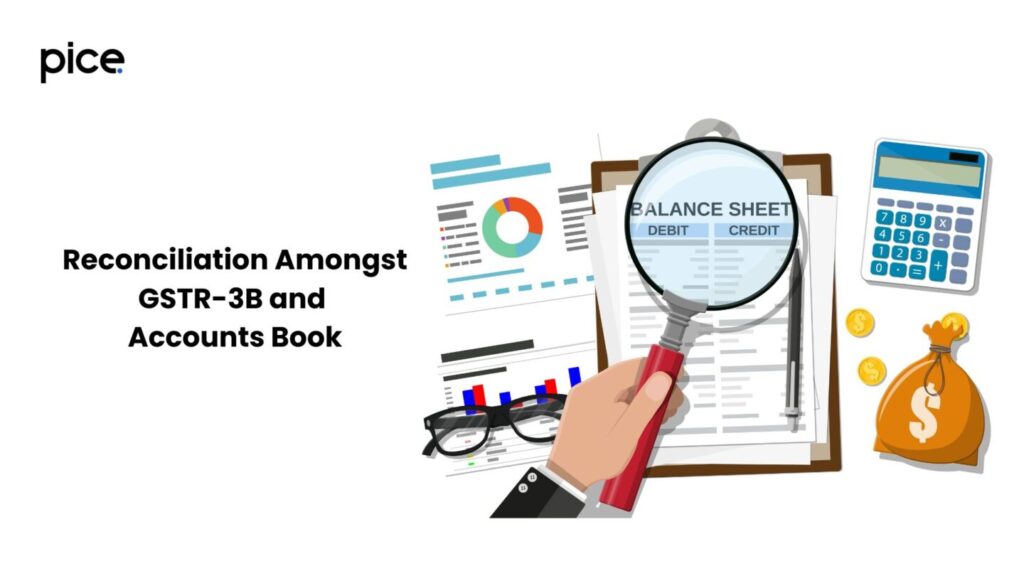
What Should Be Done in Case of ITC Mismatch Between GSTR-2B/3B and Books of Accounts?
- Identify Source of Mismatch:
- Verify discrepancies by comparing GSTR-2A/2B with purchase records and GSTR-3B with the accounts book.
- Identify if mismatches are due to timing issues, duplicate entries, or errors in reporting.
- Reconciliation Process:
- Perform thorough reconciliation between GSTR-2B/2A and books of accounts to identify root causes of mismatches.
- Reconcile GSTR-3B with the accounts book to ensure accurate ITC claims.
- Adjustment and Rectification:
- Make necessary adjustment entries in the electronic credit ledger to correct ITC claims.
- Report these adjustments in the subsequent GSTR-3B return to reflect accurate tax liability.
Reconciliation Amongst GSTR-2B/2A and Books of Accounts
- Monthly Reconciliation: Regularly reconcile purchase records with GSTR-2A/2B and books of accounts to ensure all eligible ITC is claimed.
- Rectify Errors: Identify and rectify any errors in vendor reporting and obtain valid tax invoices or debit notes.
- Maintain Compliance: Ensure all adjustments are documented and reflected in monthly returns and annual returns (GSTR-9).
Conclusion
Effective reconciliation of input tax credit (ITC) between GSTR-2B/2A, GSTR-3B, and the books of accounts is essential for maintaining compliance with GST regulations and ensuring accurate tax reporting. By regularly identifying discrepancies, such as excess or less credit, and reconciling data, businesses can optimize their ITC claims and avoid penalties.
💡 If you want to pay your GST with Credit Card, then download Pice Business Payment App. Pice is the one stop app for all paying all your business expenses.
FAQs
Who can claim Input Tax Credit under GST?
Any registered taxpayer under GST can claim ITC for the GST paid on purchases of goods and services used in their business operations, provided they meet the conditions specified in GST laws.
How to claim Input Tax credit under GST?
To claim ITC, ensure you have valid tax invoices or debit notes, reconcile your purchase records with GSTR-2A/2B, and report the ITC in your monthly GSTR-3B return. Regularly update your electronic credit ledger.
How does Input Tax Credit work under GST?
ITC allows businesses to reduce their GST liability by claiming credit for the tax paid on inputs. This ensures tax is paid only on the value addition at each stage of the supply chain, preventing the cascading effect of taxes.
What is the composition scheme under GST?
The Composition Scheme is a simplified GST payment option for small taxpayers, allowing them to pay a fixed percentage of their turnover as tax. It reduces compliance burden but restricts ITC claims.
How can ERP E-TDS Return Filing Solution help in GST compliance?
An ERP E-TDS Return Filing Solution streamlines the process of filing GST returns, ensuring timely and accurate reporting. It helps businesses manage ITC, vendor payments, and overall GST liability efficiently.
